Review of Hunter 240
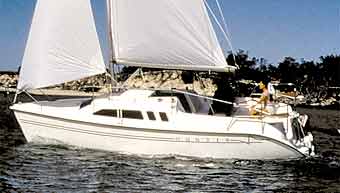
Basic specs.

Looking for a new boat? Find a Hunter 240 or similar boat for sale
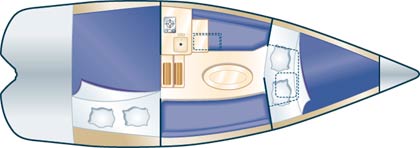
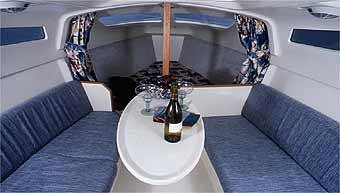
The boat is equipped with 3 cabins, 5 berths, a galley, toilet facility and 10 liter waste water capacity.
An outboard motor is often used on this boat. In that case the boat will typically require a power of 2 - 3 hp, alternatively 46 - 55 lbs thrust if you prefer an electrical motor. Electric outboards are becoming popular for sailboat owners who want clean instant power with less noise and no exhaust fumes.
Sailing characteristics
This section covers widely used rules of thumb to describe the sailing characteristics. Please note that even though the calculations are correct, the interpretation of the results might not be valid for extreme boats.
What is Capsize Screening Formula (CSF)?
The capsize screening value for Hunter 240 is 2.49, indicating that this boat would not be accepted to participate in ocean races.
What is Theoretical Maximum Hull Speed?
The theoretical maximal speed of a displacement boat of this length is 6.3 knots. The term "Theoretical Maximum Hull Speed" is widely used even though a boat can sail faster. The term shall be interpreted as above the theoretical speed a great additional power is necessary for a small gain in speed.
The immersion rate is defined as the weight required to sink the boat a certain level.
The immersion rate for Hunter 240 is about 113 kg/cm, alternatively 633 lbs/inch.
Meaning: if you load 113 kg cargo on the boat then it will sink 1 cm.
Alternatively, if you load 633 lbs cargo on the boat it will sink 1 inch.
Sailing statistics
This section is statistical comparison with similar boats of the same category. The basis of the following statistical computations is our unique database with more than 26,000 different boat types and 350,000 data points.
What is Motion Comfort Ratio (MCR)?
The Motion Comfort Ratio for Hunter 240 is 9.4.
What is L/B (Length Beam Ratio)?
The l/b ratio for Hunter 240 is 2.92.
What is Displacement Length Ratio?
The DL-ratio for Hunter 240 is 95 which categorizes this boat among 'ultra light racers'.
What is SA/D (Sail Area Displacement ratio)?
The SA/D for Hunter 240 with ISO 8666 reference sail is 22.2, with a 135% genua the SA/D is 25.6.
Maintenance
Dimensions of sail for fractional rig.
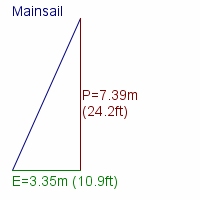
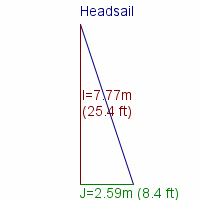
Are your sails worn out? You might find your next sail here: Sails for Sale
If you need to renew parts of your running rig and is not quite sure of the dimensions, you may find the estimates computed below useful.
| Usage | Length | Diameter | ||
| Mainsail halyard | 19.8 m | (64.9 feet) | 8 mm | (5/16 inch) |
| Jib/genoa halyard | 19.8 m | (64.9 feet) | 8 mm | (5/16 inch) |
| Spinnaker halyard | 19.8 m | (64.9 feet) | 8 mm | (5/16 inch) |
| Jib sheet | 7.3 m | (24.1 feet) | 10 mm | (3/8 inch) |
| Genoa sheet | 7.3 m | (24.1 feet) | 10 mm | (3/8 inch) |
| Mainsheet | 18.4 m | (60.2 feet) | 10 mm | (3/8 inch) |
| Spinnaker sheet | 16.1 m | (53.0 feet) | 10 mm | (3/8 inch) |
| Cunningham | 3.4 m | (11.0 feet) | 8 mm | (5/16 inch) |
| Kickingstrap | 6.7 m | (22.0 feet) | 8 mm | (5/16 inch) |
| Clew-outhaul | 6.7 m | (22.0 feet) | 8 mm | (5/16 inch) |
This section is reserved boat owner's changes, improvements, etc. Here you might find (or contribute with) inspiration for your boat.
Do you have changes/improvements you would like to share? Upload a photo and describe what you have done.
We are always looking for new photos. If you can contribute with photos for Hunter 240 it would be a great help.
If you have any comments to the review, improvement suggestions, or the like, feel free to contact us. Criticism helps us to improve.
